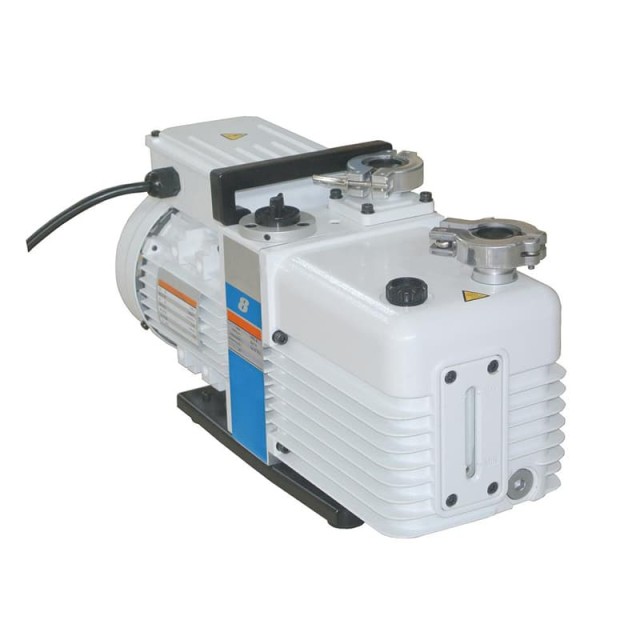
vacuum pump & cold trap chiller
Laboratory Rotary Vane Vacuum Pump for Lab Use
Item Number : VRD
Price varies based on specs and customizations
- Gas ballast valve
- Two-Shift adjustable

Shipping:
Contact us to get shipping details Enjoy On-time Dispatch Guarantee.
Why Choose Us
Reliable PartnerEasy ordering process, quality products, and dedicated support for your business success.
Applications
VRD double stage rotary vane vacuum pump is one mechanical oil vacuum pump, it features high vacuum pumping speed and stable working performance,it is one UL certificated pump.
Detail & Parts
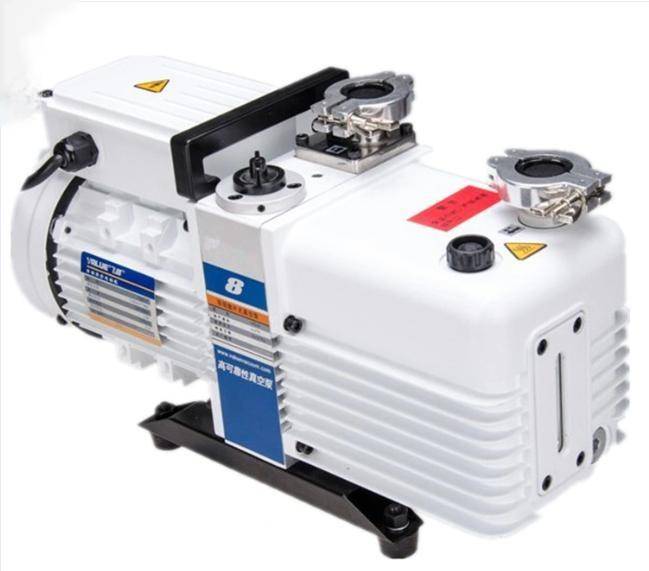
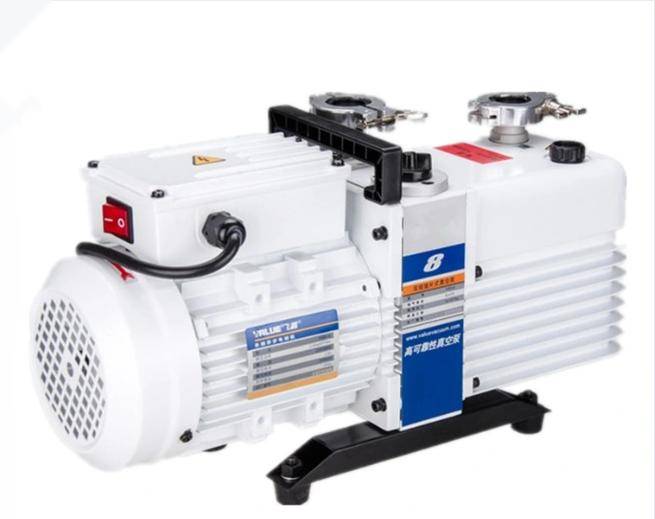
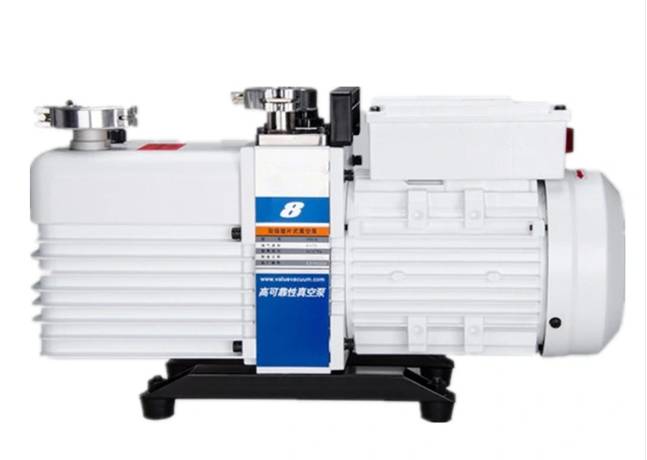
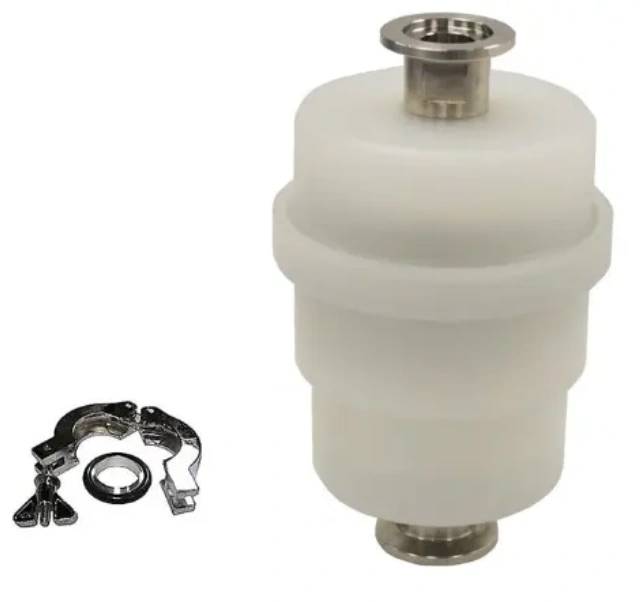
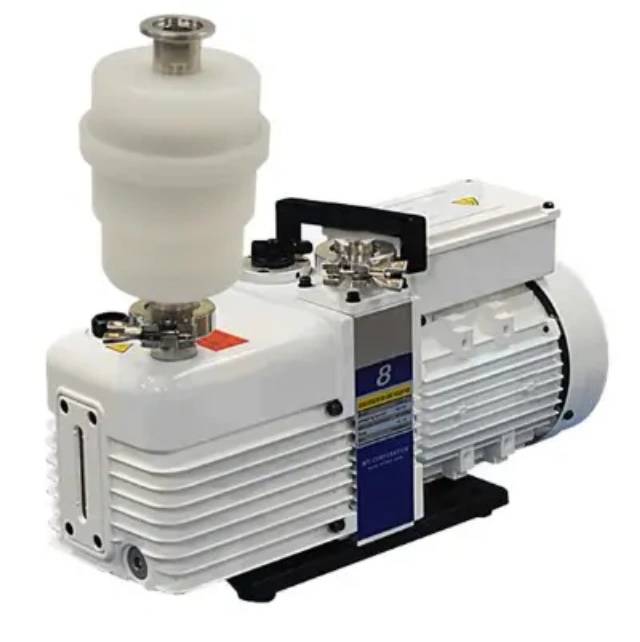
Features
Two-Shift adjustable gas ballast valve satisfies different requirements of condensable vapor(such as water vapor) to be exhausted out of pump in different processes.
Dual protection of oil anti-sucking back ensures vacuum system from oil pollution when pump stops running and needs to be easily restarted.
Forced oil circulation system consisted of oil pump and constant pressure oil supply mechanism ensures stable running of the pump.
Less components are used, easy to maintain and repair.
Technical specifications
|
Voltage frequency
|
AC 100 ~ 120V/60Hz or AC 208 ~ 240V/50/60Hz |
| Rate (m3/h) | 50Hz: 8m3/h (2.2 L/s);60Hz: 9.6m3/h (2.6 L/s) |
|
body material
|
Stainless steel |
|
greatest pressure
|
≤ 4E-3 Torr |
|
Power (HP)
|
0.4KW / 0.37KW |
| motor speed | 50Hz: 1440 rpm; 60Hz: 1720 rpm |
|
Volume of oil (ml)
|
1000 |
|
Operating temperature
|
5-40℃ |
|
vacuum port
|
Built-in KF25D standard inlet/outlet ports |
|
Dimensions (mm)
|
6.5"X 18"X 9.5" |
|
Net weight (kg)
|
twenty one |
| application note | To protect the environment and human health, use traps and filters to minimize offgassing. To protect the vacuum pump from damage from condensing vapors or small particles, connect a cold trap or particle trap to the pump front-line. |
Warnings
Operator safety is the top important issue! Please operate the equipment with cautions. Working with inflammable& explosive or toxic gases is very dangerous, operators must take all necessary precautions before starting the equipment. Working with positive pressure inside the reactors or chambers is dangerous, operator must fellow the safety procedures strictly. Extra caution must also be taken when operating with air-reactive materials, especially under vacuum. A leak can draw air into the apparatus and cause a violent reaction to occur.
Designed for You
KinTek provide deep custom made service and equipment to worldwide customers, our specialized teamwork and rich experienced engineers are capable to undertake the custom tailoring hardware and software equipment requirements, and help our customer to build up the exclusive and personalized equipment and solution!
Would you please drop your ideas to us, our engineers are ready for you now!
FAQ
What Is Laboratory Vacuum Pump?
What Is The Purpose Of Vacuum Pump In Laboratory?
What Is The Use Of Pump In Laboratory?
What Is Used In A Laboratory To Form And Contain A Vacuum?
How Does A Laboratory Vacuum Pump Work?
4.7
out of
5
The vacuum pump arrived promptly and was easy to set up. It's been running smoothly for weeks now, with no issues.
4.8
out of
5
The pump is a great value for the price. It's well-made and has all the features I need.
4.9
out of
5
This pump is top-notch! It's durable and has advanced technology that makes it stand out.
4.6
out of
5
The pump is easy to maintain and has a long lifespan. I'm very satisfied with my purchase.
4.7
out of
5
The delivery was quick, and the pump was packaged well. It's a reliable and efficient piece of equipment.
4.8
out of
5
The pump operates quietly and smoothly. It's a great addition to my laboratory.
4.9
out of
5
I'm impressed with the pump's performance. It's powerful and meets all my expectations.
4.6
out of
5
The pump is easy to use and maintain. It's a great choice for my lab.
4.7
out of
5
The pump arrived on time and in perfect condition. It's a great value for the money.
4.8
out of
5
I'm happy with the pump's quality and performance. It's a reliable workhorse.
4.9
out of
5
The pump is a game-changer for my lab. It's efficient, reliable, and easy to use.
4.6
out of
5
The pump is well-built and durable. It's a solid investment for my laboratory.
REQUEST A QUOTE
Our professional team will reply to you within one business day. Please feel free to contact us!
Related Products

Laboratory Vertical Water Circulating Vacuum Pump for Lab Use
Looking for a reliable water circulating vacuum pump for your lab or small-scale industry? Check out our Vertical Water Circulating Vacuum Pump with five taps and a larger air sucking amount, perfect for evaporation, distillation, and more.

Laboratory Benchtop Water Circulating Vacuum Pump for Lab Use
Need a water circulating vacuum pump for your lab or small-scale industry? Our Benchtop Water Circulating Vacuum Pump is perfect for evaporation, distillation, crystallization, and more.

Laboratory Vacuum Tilt Rotary Tube Furnace Rotating Tube Furnace
Discover the versatility of Laboratory Rotary Furnace: Ideal for calcination, drying, sintering, and high-temperature reactions. Adjustable rotating and tilting functions for optimal heating. Suitable for vacuum and controlled atmosphere environments. Learn more now!

Laboratory Sterilizer Lab Autoclave Pulse Vacuum Lifting Sterilizer
The pulse vacuum lifting sterilizer is a state-of-the-art equipment for efficient and precise sterilization. It uses pulsating vacuum technology, customizable cycles, and a user-friendly design for easy operation and safety.

High Pressure Laboratory Vacuum Tube Furnace Quartz Tubular Furnace
KT-PTF High Pressure Tube Furnace: Compact split tube furnace with strong positive pressure resistance. Working temp up to 1100°C and pressure up to 15Mpa. Also works under controller atmosphere or high vacuum.

Efficient split chamber CVD furnace with vacuum station for intuitive sample checking and quick cooling. Up to 1200℃ max temperature with accurate MFC mass flowmeter control.

Inclined Rotary Plasma Enhanced Chemical Vapor Deposition PECVD Equipment Tube Furnace Machine
Introducing our inclined rotary PECVD furnace for precise thin film deposition. Enjoy automatic matching source, PID programmable temperature control, and high accuracy MFC mass flowmeter control. Built-in safety features for peace of mind.
Related Articles

How to Choose Laboratory Vacuum Pumps for Maximum Efficiency and Cost Savings
Learn how to choose the right lab vacuum pump for efficiency & cost savings. Compare oil-sealed vs. oil-free pumps & future-proof your investment.

Risk-Proof Your Lab: How to Choose a Vacuum Pump That Avoids Costly Failures
Learn how to choose reliable lab vacuum pumps to avoid costly failures. Assess chemical risks, throughput needs & safety for optimal performance.

How to Choose and Optimize Water Circulating Vacuum Pumps for Your Lab
Learn how to choose and optimize water circulating vacuum pumps for lab applications, balancing efficiency and reliability.

Choosing the Right Rotary Vacuum Evaporator for Your Lab
Rotary vacuum evaporators are essential tools for any laboratory that needs to concentrate or isolate solutions. These devices work by heating a sample under vacuum to increase its surface area and effectively remove solvent.

Installation of Tube Furnace Fitting Tee
Mainly introduces the installation method of tube furnace fitting tee.

A Comprehensive Guide to Understanding Rotary Evaporator Chillers
Rotary evaporator chillers are an essential part of laboratory equipment used for efficient separation of solvents from samples by evaporation. They work by cooling the solvent vapor, which condenses and is collected separately from the sample.

A Step-by-Step Guide to Using a Rotary Vacuum Evaporator for Solvent Removal
A rotary vacuum evaporator is a laboratory instrument used for solvent removal, concentration, and purification. It is composed of a vacuum pump, a heating bath, a rotating flask, and a condenser.

Exploring the Science Behind Rotary Evaporators: How They Work and Their Applications
Rotary evaporators, also known as rotovaps or rotating evaporators, are commonly used in labs to remove solvents from samples or to create concentrated solutions. These devices work by rotating a flask or sample container at a high speed while simultaneously heating and evaporating the solvent.

Understanding the Basics of a Rotary Evaporator
The rotary evaporator is a versatile and widely used tool in the laboratory for separating solvents from compounds.

Common Mistakes to Avoid When Using a Rotary Vacuum Evaporator
A rotary vacuum evaporator, also known as a rotovap, is a laboratory equipment used for distillation purposes. It is a highly efficient system used for the removal of solvents from samples under low pressure and low temperature.

How to Choose the Best Rotary Evaporator (Rotavapor) for Your Budget
A rotary evaporator, also known as a rotavapor, is a laboratory equipment used for distillation, evaporation, and separation of solvents.

Boost Your Efficiency Why A Rotary Evaporator Is Better
Rotary evaporation is a technique used to remove solvents from samples, typically with the use of a vacuum. This method is widely used in laboratories due to its efficiency, safety, and cost-effectiveness.